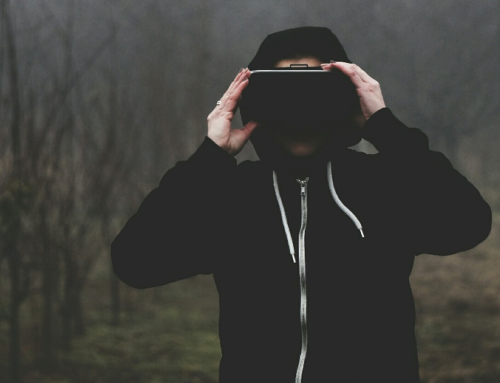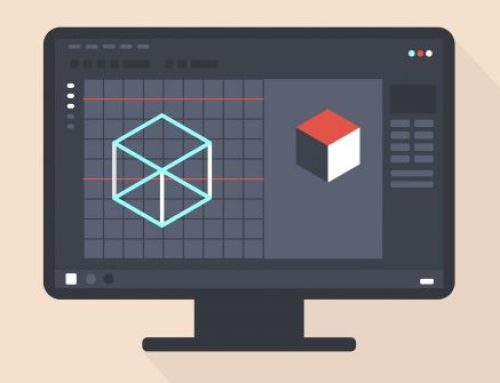Firefox-Update ermöglicht WebVR-Support für VR.
Webbrowser-Entwickler Mozilla Corp. wird mit dem geplanten Update am Dienstag sein Flagschiffprodukt Firefox standardmäßig mit Virtual-Reality-(VR-)-Funktionen ausstatten.
Diese Ergänzung wird Firefox mit seinen Hauptkonkurrenten Edge und Chrome in Einklang bringen, die bereits einige Teile des Standards für die Online-VR-Anzeige unterstützen. Das Firefox 55 Update, das morgen startet, wird den WebVR-Standard enthalten, welcher die VR-Anzeigefähigkeit für Web- und Mainstream VR windowsfähige Headsets sowie eine 2D-Fähigkeit im Browser eröffnet.
WebVR ist die große Plattform, die in Firefox 55 ausgeliefert wird“, schrieb Mozilla in seiner Update-Roadmap. „Firefox-benutzer mit einem HTC Vive oder Oculus Rift können VR-Inhalte im Web erleben.“
Mozilla`s Firefox hat im Laufe der Jahre mit der Einbeziehung des WebVR-Standards hinter anderen führenden Browsern für Windows zurückgeblieben. Google Inc.`s Chrome-Browser hat im Februar WebVR-Fähigkeiten hinzugefügt und Microsoft Corp. hat im Januar die Unterstützung der Programmierschnittstelle für Edge build 15007 hinzugefügt – die volle Standardunterstützung in Edge wird mit dem Windows 10 Creators Update eingeführt.
Mozilla kündigte seine Absicht an, VR im Juni allen Firefox-Nutzern zur Verfügung zu stellen.
„WebVR verwandelt die VR in eine erstklassige Erfahrung im Web und gibt ihr die unendlichen Möglichkeiten der Offenheit und Interoperabilität der Webplattform.“ schrieb Sean White, Senior Vice President of Emerging Technologies bei Mozilla. „In Verbindung mit WebGL zum Rendern von 3D-Grafiken verwandeln diese APIs den Browser in eine Plattform, die es ermöglicht, VR-Inhalte im Web zu veröffentlichen und sofort von jedem fähigen VR-Gerät zu konsumieren.“
WebVR ist eine experimentielle JavaScript-API, die Entwicklern eine einfache Unterstützung für VR-Geräte wie das HTC Vive, Oculus Rift und Google Cardboard über einen Webbrowser bietet. In einem voll kompatiblen Browser kann ein Entwickler mit WebVR VR-Geräte erkennen, Gerätefunktionen auflisten, die Geräteausrichtung bestimmen und VR-Bilder mit der entsprechenden Bildrate streamen.
Mit WebVR können Entwickler, die webbasierte APIs verwenden, VR-Erlebnisse erstellen, die mit mehreren verschiedenen Geräten kompatibel sind und von verschiedenen Plattformen wie Windows, iOS, Linux oder Android ausgeführt werden können.
Der Support für WebVR wurde das ganze Jahr über mit der Version 1.1 entwickelt, die in einer Reihe von Browsern verfügbar ist: Chrome für Android, Firefox Nightly, Samsung Internet, Microsoft Edge, Servo und Oculus Carmel.
Verbraucher, die WebVR-fähige Browser verwenden, können bereits Inhalte im Web finden, die diesen Standard verwenden. Beispielsweise können auf der Website von Within Unlimited Inc. 360-Grad-VR-Filme angesehen werden – darunter „Asteroids“ und die „Mr. Robot Virtual Reality Experience“. Alternativ können Sie viele neue Freunde mit der VR Social App Beloola finden.
Auch bei WebVR Experiments gibt es eine Vielzahl von Erlebnissen zu sehen, darunter Google Creative Lab`s „The Musical Forrest“, das virtuelle Tennisspiel „Konterball“ von Wild und „Under Neon Lights“, ein interaktives Musikvideo von The Chemical Brothers from Within.
Eine Reihe von Tools, die WebVR unterstützen, gibt es bereits für Entwickler wie JanusVR, um immersive 3D-Webspaces und -Welten im Web zu erstellen. A-Frame, Mozillas Open-Source-Community-basiertes-Entwicklungs-Framework für die 3D-Spielmodellierung und PlayCanvas, eine 3D-Spiele-Engine und interaktive Anwendung, die mit einer Cloud-basierten Erstellungsplattform entwickelt wurde.
Es gibt noch viel für Sie zu entdecken. Viel Spaß beim Erkunden der neuen technischen Möglichkeiten.


